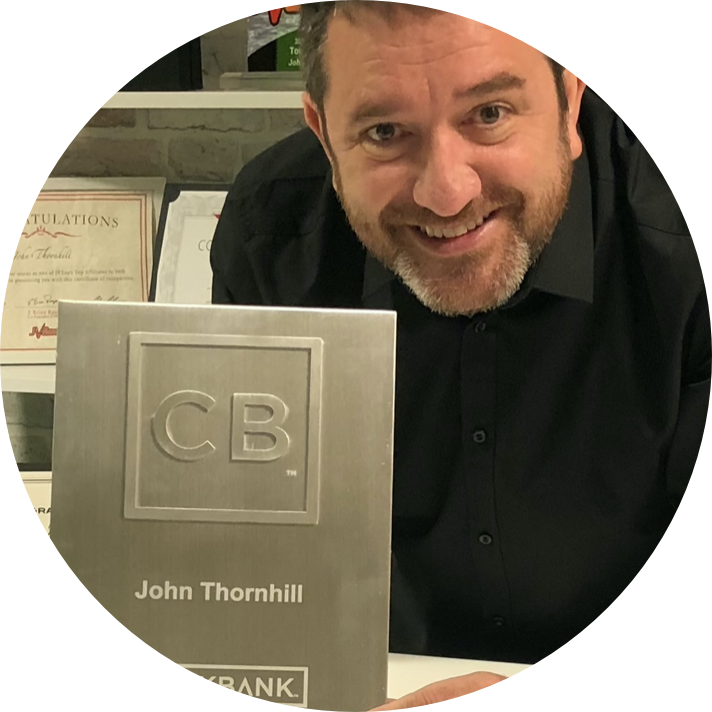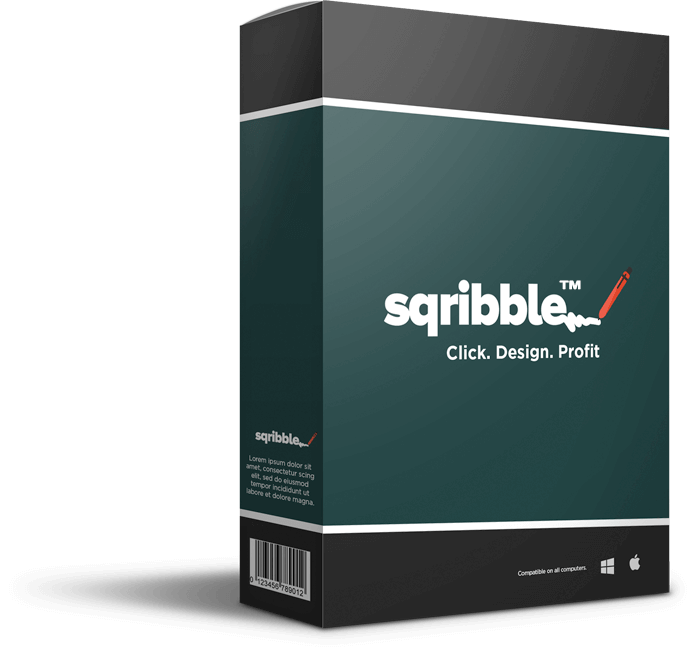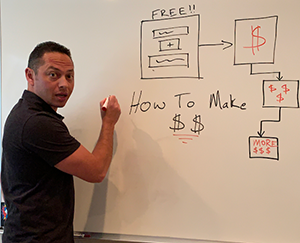Lifting the Founder’s Curse: Unlocking Business Value Beyond Yourself written by John Jantsch read more at Duct Tape Marketing
The Duct Tape Marketing Podcast with John Jantsch In this episode of the Duct Tape Marketing Podcast, I interviewed Ryan Deiss, a serial entrepreneur, author, and the founder of digitalmarketer.com. Our discussion begins with his latest book, “Get Scalable: The Operating System Your Business Needs to Run and Scale Without You.” and pivots to invaluable […]
Lifting the Founder’s Curse: Unlocking Business Value Beyond Yourself written by John Jantsch read more at Duct Tape Marketing
The Duct Tape Marketing Podcast with John Jantsch
In this episode of the Duct Tape Marketing Podcast, I interviewed Ryan Deiss, a serial entrepreneur, author, and the founder of digitalmarketer.com. Our discussion begins with his latest book, “Get Scalable: The Operating System Your Business Needs to Run and Scale Without You.” and pivots to invaluable insights on breaking free from the Founder’s Curse and unlocking business value beyond yourself.
Key Takeaways
Embark on a transformative journey with Ryan Deiss in this Duct Tape Marketing Podcast episode, where he unveils strategies unlock scalable business growth, gain insights into the power of value engines, strategic rhythms, and high-output teams. Learn the art of overcoming founder indispensability, mapping value creation flows, and implementing a meeting rhythm that actually works. Whether you’re a seasoned entrepreneur or just starting, Ryan’s actionable insights will empower you to build a thriving business that stands the test of time.
Questions I ask Ryan Deiss:
[00:50] What is the founder’s curse?
[01:44] Would you say that what you developed in your book came from the mistakes you made along the way?
[04:05] How does the operating system viewpoint apply to business owners?
[05:54] Would you say focus and priorities are the main benefits of value engines in business?
[07:42] How many value engines are needed to run a business?
[09:07] How do you recognize opportunities that add value to the engine?
[11:48] Tell us about the high-output-team approach and how it aids recruitment, onboarding, and performance ?
[16:29] What is Meeting Rhythm?
[20:12] Where can people find your book, the tools mentioned and connect with you?
More About Ryan Deiss:
- Connect with Ryan on LinkedIn
- Visit Scalable.co
- Get a copy of Get Scalable
Like this show? Click on over and give us a review on iTunes, please!
Connect with John Jantsch on LinkedIn
This episode of The Duct Tape Marketing Podcast is brought to you by Work Better Now
Visit WorkBetterNow.com mention the referral code DTM Podcast and get $150 off for your first 3 months.
John (00:08): Hello and welcome to another episode of the Duct Tape Marketing Podcast. This is John Jantsch. My guest today is Ryan Deiss. He’s a serial entrepreneur, author and investor, and the founder and CEO of the scalable company digital marketer.com, and a founding partner at Scalable Equity LLC. He’s also the founder and host of Traffic and Conversion Summit, the largest digital marketing conference in North America. Today we’re going to talk about a new book called Get Scalable, the Operating System. Your Business Needs to Run and Scale Without You. So Ryan, welcome back.
Ryan (00:44): Thanks for having me. Good to be here.
John (00:46): So I want to start right off the bat, and actually you do in the book start off with this idea of the founder’s curse. So it sounds so evil. I think we ought to start there and have you kind of unpack what that is and how that impacts so many entrepreneurs.
Ryan (01:00): It kind of is evil. I mean, the founders curse states that the more valuable you are to your business, the less valuable your business is. And that is one of the harshest truths for any entrepreneur to have to come to face to face with because most of us got into this game. We were independent minded and we had our specific idea and we wanted to do it our way and we sort wanted to stay that way. And it can, as long as your business stays small, but your business, if only, if you’re always the most valuable person in your business, then your business will never be that valuable. I don’t care how awesome you are.
John (01:30): So a lot of authors come to things on their own and discover things on their own, and when they write about them, they almost become a little bit autobiographical. I have heard you talk at length about some of your challenges in your business. I mean, would you say that some of what you’ve developed in this book came about from all of us, the mistakes that you made along the way?
Ryan (01:51): Absolutely. This book was one part trying to write the book that I wish I had when I was scaling my business in two parts therapy because go back to 2016, and I don’t know how much your listeners will know about me, but in general out there in the world, I’m known as a marketer, I’m a growth guy, I mean founder of digital marketer.com, traffic and Conversion Summit. In general, when I speak, I’m talking about marketing. That’s how you and I got to know each other. But in 2016, I had to learn the hard lesson. That growth isn’t everything. That year I had three different companies within our portfolio group that all grew enough to hit the ink, 500 or 5,000 lists of those three companies, one of ’em went on to experience really great success. It had a profitable exit, and the remainder of that business is still very profitable and successful today.
(02:38): One of those businesses failed after a number of years because our partner in the business, the CEO, wouldn’t get out of his own way. And that business kind of went flatlined, trudged along and a couple years ago was sold to a competitor for basically nothing. The other business failed spectacularly. And within about three months of appearing on the list, we had to lay off 180 people and within another six months the business was fundamentally bankrupt. That business was the one that grew the fastest. And so the lesson I had to learn there is that growth isn’t everything. And that same year that all that was happening, if somebody were to look at from the outside in, they’d be like, oh, you’re very successful. Businesses are growing. You must be doing well. I wasn’t. I was making less money than ever because money was getting poured back in. I was working longer and I mean, I was missing family dinners. I was missing dance recitals. And it wasn’t until I came home after midnight one night, my wife was like, Hey, look, you can keep doing what you’re doing. I know who I’m married, but you can’t pretend like you’re doing it for us anymore. We just want you, this is ridiculous. That was kind of the wake up call that I had. And so yeah, man, it all came from pain.
John (03:42): So this book is, I mean, you have sort of a linear fashion to the stuff that you build and the frameworks that you’ve built here. And this book is literally we could go chapter by chapter and you’d say, yeah, that’s next, and that’s next and that’s next. Which obviously makes it really easy on my standpoint to just kind of break it down that way. But let’s start with probably the basis of the entire book is this operating system viewpoint. So talk a little bit about that and how that applies to anybody trying to build a business.
Ryan (04:13): Yeah, the fundamental thing that every business has an operating system, the problem is that in most businesses the operating system is the CEO. It’s a UOS, right? So if you’re the ceo EO, if you’re the founder, you are the operating system and the operating system is you. So what we’re trying to do through the book, going back to the founder’s curse, is to make the founder less valuable to the business. It doesn’t mean they don’t still add value, that they aren’t still important, but we got to get it to a point where if they’re not there, the business can still go on. This is not a new concept. Plenty of books have been written on this very concept where I think all the other books either got it wrong or just it was incomplete, is they started from the perspective of goal setting. So if we’re going to build an operating system, we first have to decide what is this business going to achieve and then how are we going to do it and what are the projects and the people and the meetings and all that stuff.
(05:02): I’ve tried that it doesn’t work. What works is answering the question, how do we create value in the marketplace? How do we capture and create marketplace value? And that’s just not just a question to answer broadly for us. We want to answer that question visually. And so the very first step that we do when working with customers or clients after we acquire a business, what I talk about in the book is to map what’s known as your value engines, your business process maps, how do you get customers and clients and what do you do with them once you got ’em, how do you serve ’em? How do you sell ’em? How do you serve? And we want to visually map that in flowchart form. Then we can start building an operating system around that. So we don’t give people an operating system and say, plug your business into it. We don’t say, what are your goals? And then give you a meeting rhythm as though that’s an operating system. We start from how your business creates value and build an operating system around the value creation process.
John (05:54): And I think what I love about that too is it automatically creates priorities, creating those value engines. A lot of people talk about mapping processes and things and they go down this rabbit hole of, okay, well we got 670 things here that we do, let’s map them all. And when you really break it down to those two value engines or those two categories of value engines, it sort of focuses the attention, right? I mean, that’s the only thing to focus on if those aren’t done, none of that other stuff matters. I mean, would you say that’s an accurate assessment of what value engines do to a business?
Ryan (06:28): Absolutely. And that is the goal. The goal is to get, as businesses scale, they get more complex, and as systems get more complex, they start to break down. So I think one of the biggest things that we’re looking to do is to thatcomplicate this stuff. And the way you do that is by asking first principles questions. And so a question of, okay, how do customers happen? Just how do they happen? A lot of businesses could generally explain it, but can you show me? And so if you can show me in flowchart form, okay, well, they see an ad on Instagram or Facebook, and when they do that, then they go to this landing page and then if they opt in, then this happens. And if they don’t, they get put on a retargeting list and then they go through this whole process and then eventually down the road they give us money.
(07:05): Great. Now what you can do is you could say of these different processes, what are the ones of these stages within this value flow? What do we want to make sure that we get right every time? Okay, now we can build an SOP or a checklist or what we call playbook around just that, not everything, just that. You can also ask the question, who is uniquely responsible or accountable to each of these stages? That’s going to define your hiring plan and job descriptions. You can say, how do we know this stuff’s working? That creates your scorecards. All of these things combined are what form a company operating system. But the foundation of all of it is just answering the question, how do we capture and create marketplace value?
John (07:42): So break it down again. You’re essentially saying there’s two value engines like fulfillment and how we get a customer or are there
Ryan (07:51): Two, I wish we were always that areas, each area. So for most businesses at scale, let’s say you’re over 10 million in revenue, you’re probably going to have two, maybe three growth engines. Maybe you’ve got a growth engine where you’re doing online media buying, and then maybe you’ve got another growth engine where maybe you have an outbound sales motion or maybe you have one where you’re doing trade shows and it just is a different flow. Customers happen differently depending on the entry point of the, you might have fundamentally different value in growth engines for your different products in your product line. But I’ll tell you, John, I mean we run really large companies, mid eight figure businesses. I say really large by small medium sized business standards figure businesses. It’s rare for them to have more than three or four growth engines. It’s rare for them to have more than a couple fulfillment engines. It’s just rare. Most of them will map, they start to look the same. Most big successful businesses are actually pretty simple if you pull all the crud away.
John (08:48): So let’s drill down into a business of yours that I’m somewhat familiar with, digital marketer. So essentially that started one type of offering, and that was if you’d done a value engine for that, you’d have mapped out the fulfillment of that offer, but then you decided, oh, we could have this kind of thing or we could license agencies to do different, how do you add things when you realize there are other opportunities? Then I mean, do those just become new engines?
Ryan (09:13): So usually when you add new products to your product line, they become new squares on the existing growth engine. So somebody will come through and you’ll say, well, what happens when somebody buys this? Let’s just say when they become a member of Digital Marketer Lab, let’s say they become a member of Digital Marketer Lab. That’s kind of our main membership at Digital Marketer. Once they bought that, we’ve sold ’em everything that we can sell, we’re done. Well, wouldn’t it be better if we kept selling ‘EM stuff for all involved? Okay, well, what else can we sell? Well, there’s a lot of agencies who are joining this program who they would like to license this. So what if we had a certified partner program? Now that doesn’t, but in the beginning stages, it probably doesn’t have its own fulfillment engine. What we’re probably going to do is market this program to our existing clients so it becomes another stage, and now it’s after somebody’s bought this, let’s try to sell ’em this. If they buy it, then they go into a different fulfillment engine. If they don’t, then that’s that. And then once it exists and they’ll say, let’s give this its own dedicated growth engine. It’s almost always going to have its own dedicated fulfillment engine though.
John (10:21): And now a word from our sponsor. Work better now. Work better now provides outstanding talent from Latin America, hand matched to your business with over 40 roles across various industries, including marketing. They’re a reliable partner for consistently finding the perfect fit for your business. Simply tell them what you need and they’ll handle the rest. We have two work better now, professionals on our team, a marketing assistant and a marketing coordinator, and we’ve been blown away by their abilities, responsiveness, and professionalism. They’ve really become an essential part of our growing team. And to top it off, each dedicated and full-time work better. Now professional is 2350 per month and there are no contracts to schedule a 15 minute consultation with a work better now rep and see how they’ll support your business growth goals, visit work better now.com. Mention the referral code DTM podcast, and you’re going to get $150 off for your first three months.
(11:20): That’s work better now.com. And don’t forget that DTM podcast code, right? Because something has to happen when somebody says yes, right? I want to buy that right now. I’m going to skip around a little bit, but this is probably everything you’re talking about. A lot of businesses need to build, but I would say if you were going to ask a hundred businesses, the place where they say they struggle the most is with people, teams getting output, getting productivity. So you have a very somewhat systematic approach to really not only the recruitment and onboarding of folks, but how to make sure that they’re actually performing. You want to unpack the high output team approach.
Ryan (12:02): Sure. So I’ll say that the two mistakes that most entrepreneurs CEOs make, number one, they find a problem, a challenge, a constraint in a business, and they just hire someone and they basically hurl ’em at that problem. So we’ve got this issue, we’re going to hire Bob, we’re going to throw Bob at it. And the problem with this is number one, Bob doesn’t know how to solve that problem day one, and number two, you don’t have the time to teach him and you might also not know how to solve it either, hence the reason it’s not solved and you need Bob. And so we’ll hire people to solve problems that we don’t know how to solve. They don’t know how to solve. And so we get frustrated with them. We say, I don’t know why I hire all these people, I should just do it myself.
(12:39): The other challenge that mistake that we’ll make with people is we’ll go to individuals and we’ll ask them, Hey, what do you do? I want to make sure that everybody’s on task and I want to make sure that we’re measuring your performance. So what do you do and how do you think? What are the metrics that you believe we should track you by? And we do this at an individual level that doesn’t work. Okay, here’s what does work. Go back to the value creation flow, the value engine that you mapped, and don’t start with the individual and say, what does this person do? And don’t start with a problem and say, who can we get to solve this problem? Go back to your value creation process and say, okay, back to step number one of this flowchart. Who or whom are uniquely accountable, responsible for getting this one done the right way?
(13:23): Then based on that description, you would put, we call it a critical accountability bullet. You say, okay, well we got Jim, and Jim is our media buyer, so Jim needs to run and optimize Facebook and Instagram ads. Got it. Okay, we’re going to keep going. What about this next one, the landing page? Okay, well, that’s going to be Fred. Fred is going to build and track landing page conversion rate. Got it. So we don’t start with the person and ask what do they do? We start with the value creation process and ask, who does this? In doing that, you’re essentially building job descriptions in reverse, and now what you can do is you can ask the person, how do we know that all this stuff is working? Now we can begin to build scorecards again, not based on an individual’s performance, but based on the flow through one of these particular value engines.
(14:06): In doing that, if you start with the value creation process and work backwards to the individual, you figure out a couple things. Number one, you figure out the people who are overwhelmed with a lot of work and very often as the founder’s, ceo, EO, it’s you who’s responsible for this? Me? What about the next step? Me? What about the next one me? And you’re giving yourself all these critical accountability bolts, but now you can look at it and say, who can I hand these off to? Or who can I hire to bring this in? So it’ll inform your hiring plan. If you don’t have the people or who needs help on your team, whether it’s, you’re also going to find some people who are superstars, but they don’t have a lot of work, and you can diamonds in the rough. You’re also going to find people on your team who they talk a good game, they’re good at politics, but they really don’t do anything, and this uncovers all of that. And so yes, don’t start with the person asks, what do they do? Start with the value creation process and ask who does this? You find out who your real players are.
John (14:58): You get more than about 10 people, and people can start hiding. They, I mean in terms of what actually gets done and we fill up the time, so it seems like everybody’s busy, but when you really do map ’em to those critical things, it’s like what are you busy at? And I think that’s a really key
Ryan (15:14): Metric, and that’s the other piece to that point, once you’ve done the value engine audit and said, who’s responsible for all these things? Now you can go to individuals and you can ask ’em, what are you currently doing that isn’t reflected on this? And you’ll just find that they’re doing all these things that just don’t matter. And sometimes because they thought that it mattered sometimes because some manager two years ago told ’em they should do it, and so they just kept doing it what they were told to do.
(15:40): And you can find all these things that people are doing that are either disconnected from a value creation process that you can plug in. I’ll give you an example. We had a content marketing manager who was producing five to seven pieces of content for one of our websites for one of our blogs every single week. Exactly. None of those content pieces was directing back to some type of lead capture mechanisms, none of them. And so it was this orphaned activity that it didn’t come up when we were auditing our growth engine because nobody opted in for anything. As a result of this, we were able to say, well either stop doing this or we got to get marketing to come over and start adding some of these things. It didn’t make any sense. It wound up being a whole lot of free leads that we had missed and got back.
John (16:24): So you mentioned it a couple times, everybody’s least favorite thing, and that is meetings. You have a fairly particular take on meeting rhythm, so you want to unpack that one?
Ryan (16:35): Yeah, so one thing I really don’t like doing is having some kind of 10 year big, hairy, audacious goal for small, medium, medium-sized businesses. You have no idea where you’re going to be. If you want to set a company purpose, I love that. I think every company should have a core purpose. If you want to call that a vision or a mission, fine, don’t nobody ever agrees on what those things are. So we just say, what is your company purpose? And that should be something that really doesn’t have a timeline. So that’s as big as we get when we’re doing goal setting. We’re going to set a three year target. I love three years. It is enough time to do something really big and meaningful, but not so long that you can’t imagine it. So that’s kind of meeting number one. About every three years we’re going to set a three year target.
(17:16): Pretty simple. Now we take those three years and we break ’em up into 1290 day sprints, 12 quarterly sprints. There are obviously four quarters in a year, three years, four quarters, 12. And so every quarter we’re going to do what we call our quarterly sprint planning meeting. And this is where we look at our three year target and we ask the question, what needs to be true that isn’t true today? What are those actions, these key initiatives that need to be completed to get us closer to that goal? And so we’re going to usually come up with three to five of those. We’re going to assign tasks and responsibilities. We’re going to get clear on the metrics that we really want to focus on optimizing. We’re going to set up a goal for that quarter, and that’s a one to two day deal. So every 90 days we got a one to two day planning meeting. By the way, if you’re planning every 90 days, you don’t need to do an annual plan. So that isn’t a part of my planning process.
John (18:05): Do a three year target. The annual part just flies by the next quarter, right?
Ryan (18:09): It’s amazing. It’s going to show up about once every four quarters, and that’s important because so many people do annual planning in December when you’re the most optimistic, the most hopeful. It’s like going grocery shopping when you’re hungry. It’s just not a good time to do it. By the way, I’m fine if you want to do an annual financial performer, fine, but in terms of your strategic plans and what are you going to get done, do that on a 90 day planning rhythm. Now, once we’ve done that, we have a monthly business review. And so each month we’ll get together and look at our scorecards, and then every week each team, including the leadership team, is going to have a scorecard meeting. Now, that may sound like a lot of meetings, but in reality, if you’re meeting to look at scorecards and we got a rule, no scorecard, no recurring meeting, so we’re meeting once a week at the leadership level, and then the teams are also meeting to discuss their scorecards to see are they doing the things that need to get done?
(19:06): Are we achieving the metrics? Are the projects we’re doing having an impact? Is that happening? If it’s not, then we can schedule an ad hoc meeting to discuss how do we improve, how do we optimize? It’s amazing when you have a regular meeting rhythm, you actually have less meetings. You don’t need as many ad hoc. The next one’s a week away. You know that you’re going to have an opportunity to discuss any necessarily pivots and tweaks to the plan at the quarterly business review, I’m sorry, at the monthly business review. And then at the next quarter, you’re going to reset plans and priorities. So somebody comes in with, we need to do this now. Do we really? Or can that wait until next quarter? And so that’s our planning rhythm, weekly scorecard meetings, monthly review and pivot meetings, quarterly strategic planning meetings, and every three years we’re set in our targets.
John (19:54): And I like the term rhythm because that’s really what it ends up feeling like once you get into it, right? It’s like, no, this is just humming along this way, this whole process, the book, everything that you do is very tool driven. You’ve got a few tools that you give away. So I guess this is the point in the show where I’d invite you to lead us to where we need to go to find the book, to find the tools to find out more about connecting with you.
Ryan (20:17): So you can get the book at Amazon or anywhere. Books are sold. Mostly Amazon though. But if you were to buy the book and open the book right there inside the flap, there is a link to get scalable.com. And what this gives you is all the tools that we use internally to create our own operating system. And so it is the same tools that we use. Now, I want to clarify something. These tools aren’t always overly fancy. We’re talking Google sheets, but they’re what we use. So our scorecards are all manual, and that’s by design. We want people to manually input their numbers so they know their numbers. We want them to manually decide is this red, yellow, or green so that they’re the ones own it who are objectively thinking, are we ahead of schedule? Are we behind? What do I think? I want people to own their stuff, but yeah, what we’re giving you is here all the exact same tools that we use internally. The book is going to teach you how to use ’em, how to deploy ’em, how to install ’em, but we’re not upcharging or anything like that for the tools themselves. I thought about it, the marketer in me was like, Ooh, let me have a book that tells ’em how to do it, but it tells ’em what
John (21:19): To do, not how to do,
Ryan (21:21): Yeah, exactly what, that’s what the marketer in me want to do. But I said I wanted to write the book that I wish I had and I didn’t want to leave anything out. And so we just went ahead and gave you all the tools.
John (21:31): And I’m sure when people get the book, they’re also going to find out that this is something they can hire a coach for as well, right?
Ryan (21:37): Yeah. Obviously if you want our help actually building out the operating system in your business, we would love to do that. We’ve had plenty of clients though, self administrate and you certainly can do that as well. But yes, if you want help, we do have a team of people behind the scenes that would love nothing more than to work with you and actually getting this implemented. The tools are good, the setup is good, but that last little bit of figuring out how do we specifically implement this into your business, some one-on-one help can be useful there.
John (22:07): Yeah, absolutely. Well again, appreciate you stopping the Duct Tape Marketing Podcast, and hopefully we’ll run into you one of these days soon out there on the road.
Sign up to receive email updates
Enter your name and email address below and I’ll send you periodic updates about the podcast.
Recommended Story For You :

How To Make $3493 Commissions Without Doing Any Selling

Successful dropshippers have reliable suppliers.

People Think I Use A Professional Voiceover Artist. NO! I Just Use Speechelo!

Make Money Testing Apps On Your Phone Or Tablet

Make More Money or Lose Everything

Sqribble Is The ONLY eBook Creator You’ll Ever Need.

Work & Earn as an Online Assistant

Create Ongoing Income Streams Of $500 To $1000 Or More Per Day

It's The Internet's Easiest Side Business.






